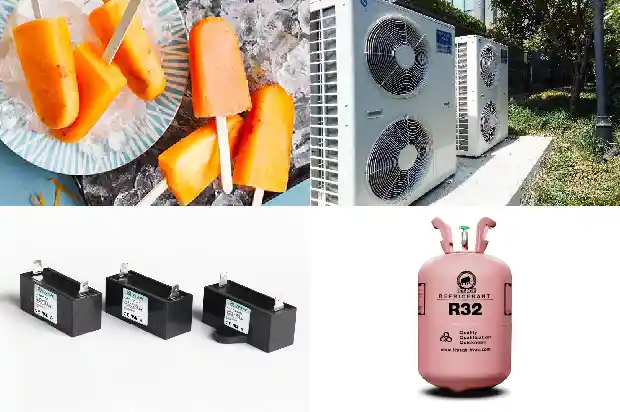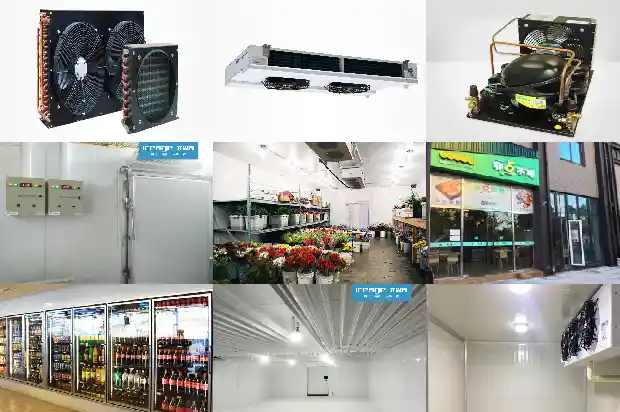Noise Reduction and Vibration Damping in Refrigeration and Air Conditioning Systems
2025-03-05
Generally speaking, any sound that makes people feel irritable and annoyed after hearing it and affects human health belongs to "noise". Since noise not only affects people's normal life and rest, but also causes damage to human hearing when it reaches a certain level, or affects the normal operation of some instruments and equipment, there are standardized definitions and grade appraisal standards for "noise" in international and national standards. Generally, 90dB (A) (decibels) is regarded as the allowable noise standard for human hearing protection at home and abroad. If people work in a noise environment greater than 90dB (A) for a long time, it will lead to hearing impairment; when the noise is greater than 45dB (A), it will affect the sleep of normal people.
China's "Ambient Acoustic Environment Quality Standard" divides the acoustic environment functional areas into five types according to the characteristics of the use function of the environmental area and the requirements of environmental quality, and stipulates the noise standards for different types of areas. For example, in residential areas (Type 1), the noise during the day should not exceed 55 dB (A), and at night it should be 45 dB (A); in commercial central areas (Type 2), the noise during the day should not exceed 60 dB (A), and at night it should not exceed 50 dB (A); in industrial production areas (Type 3), the noise during the day should not exceed 65dB (A), and at night it should be 55dB (A), etc. For refrigeration and air conditioning facilities, while providing convenience and comfort for human life, due to the functional actions of relevant components in the refrigeration facilities, there will also be noise that causes discomfort to human hearing. Therefore, the noise of the refrigeration device must be controlled and improved.
Sound originates from the vibration of objects. The noise of the refrigeration device mainly comes from two aspects: aerodynamic noise and mechanical noise.

- Select a low-noise fan. The diameter of the fan impeller, the structure of the casing, the number of blades, etc. affect the magnitude of the aerodynamic noise. For example, in the air conditioning system, most of the centrifugal fans with a relatively low rotation speed and backward-curved fan blades are selected.
- Reduce the air resistance in the air duct. Improve the structure of the air duct to ensure that the inside of the air duct is smooth without sharp edges, and adopt streamlined designs for elbows, joints, etc.
- Use sound-absorbing materials to prevent the diffusion of noise. For example, lay sound-absorbing materials in parts such as air conditioners, compressor rooms, and air ducts. Sound-absorbing materials are porous, such as superfine glass wool, felt, foamed plastics, etc., which can absorb sound energy and reduce the external transmission of sound.
- Use a muffler (also called a silencer). Install the muffler on the air flow passage to reduce the noise when the air flow passes through. There are many structures of mufflers, including resistive mufflers, resonant mufflers, reactive mufflers, etc. Resistive mufflers are more commonly used in air conditioners. The high-pressure refrigerant discharged from the refrigeration compressor has a very high flow rate, so a certain amount of noise will be generated during the exhaust process of the compressor. In order to reduce the noise generated by the compressor exhaust, a muffler can be added. The principle of the muffler is to use the sudden increase in the diameter of the pipe to reflect the noise back to the compressor.
- Take vibration damping measures for devices prone to vibration to reduce the mechanical noise generated by mechanical vibration. Generally, elastic components are installed between the equipment (components) prone to vibration and its foundation. Rubber materials are often used as elastic vibration damping supports for vibration damping materials of the support type. For example, spring shock absorbers or vibration damping pads are set under the compressor. For pipeline vibration damping, hose connections are often used. For example, at the connection between the inlet and outlet of the fan and the metal air duct, a soft air duct made of canvas or rubber material is used. Stainless steel bellows are often used for the vibration damping of the refrigerant pipeline.
- Add damping materials: The air ducts of the air conditioning system are made of metal plates. Coating damping materials such as asphalt, soft rubber, and other polymer materials on the surface of the metal plates can achieve the effect of sound insulation. Some fan casings are also coated with damping paint to reduce noise.
Instruments for measuring noise include sound level meters, frequency analyzers, automatic monitors, etc., and they need to be calibrated regularly. The measurement should be carried out in the absence of rain, snow, and thunder, and when the wind speed is below 5m/s. A windscreen should be added to the microphone during the measurement. In the national standard "Ambient Acoustic Environment Quality Standard", the environmental noise limits and measurement methods for five types of environmental functional areas are specified. The following three measurement point conditions (referring to the position where the microphone is placed) can be selected for the measurement of environmental noise:
- General outdoor: Measure at least 3.5m away from any reflector (except the ground), and at a height of more than 1.
2m from the ground. If necessary, it can be placed on a high-rise building to expand the sound receiving range of the monitoring. When using a monitoring vehicle for measurement, the microphone should be fixed at a height of 1.2m on the top of the vehicle.
- Outdoor of noise-sensitive buildings: Outside the noise-sensitive building, 1m away from the wall or window, and at a height of more than 1.2m from the ground.
- Indoor of noise-sensitive buildings: At least 1m away from the wall and other reflecting surfaces, about 1.5m away from the window, and at a height of 1.2 to 1.5m from the ground.
For the noise measurement of the refrigeration device, the measurement point position can be selected at several different positions 1 meter away from the surface of the fan, water pump, and refrigeration compressor and 1.5 meters above the ground, and find the point with the maximum sound level.
In order to evaluate the noise interference of a certain device on the environment, the measurement point can be selected at the location that needs to be evaluated, or measured at different distances such as 10, 50, 100, and 200 meters away from the sound source.
Related Articles
- What Are the Common Causes of Cold Air Blower Noise?
- What Causes Noise in Pressure Reducing Valves?
- How to prevent vibration and reduce noise in the installation and construction of cold storages?
- Several Key Components on the Oil Circuit of the Refrigeration System
- The Use and Common Maintenance Methods of Refrigeration Compressors
- Why Does the Refrigeration System Need to Be Evacuated?
- Micro Refrigeration System
- HVAC - Common Auxiliary Components of the Refrigeration System
- The Influence of Temperature Changes on the Air Conditioning Refrigeration System
- Analysis of the Main Functions and Components of Refrigeration Air Conditioners
- Valves in the Refrigeration System
- HVAC - Solving the 5 Common Problems in the Refrigeration System
- Eliminate the "Blockage" Faults (Ice Blockage, Dirt Blockage, Oil Blockage) of the Refrigeration System in 5 Minutes
- Brief Analysis of Commonly Used Automatic Control Devices in the Refrigeration System
- Forms and Structures of Oil Separators in the Refrigeration System
- Five Common Problems in the Refrigeration System~~ Solve Them One by One!
- Pipelines Used in the Refrigeration System
- Does a lower evaporation temperature result in a larger refrigeration capacity, or does a higher evaporation temperature lead to a larger refrigeration capacity?
